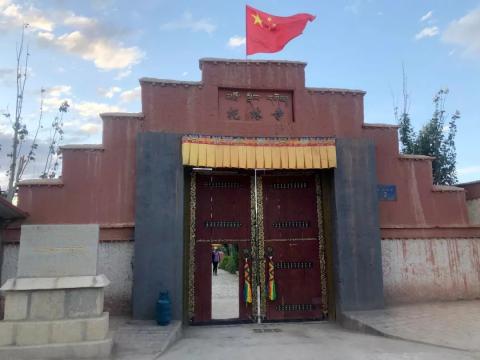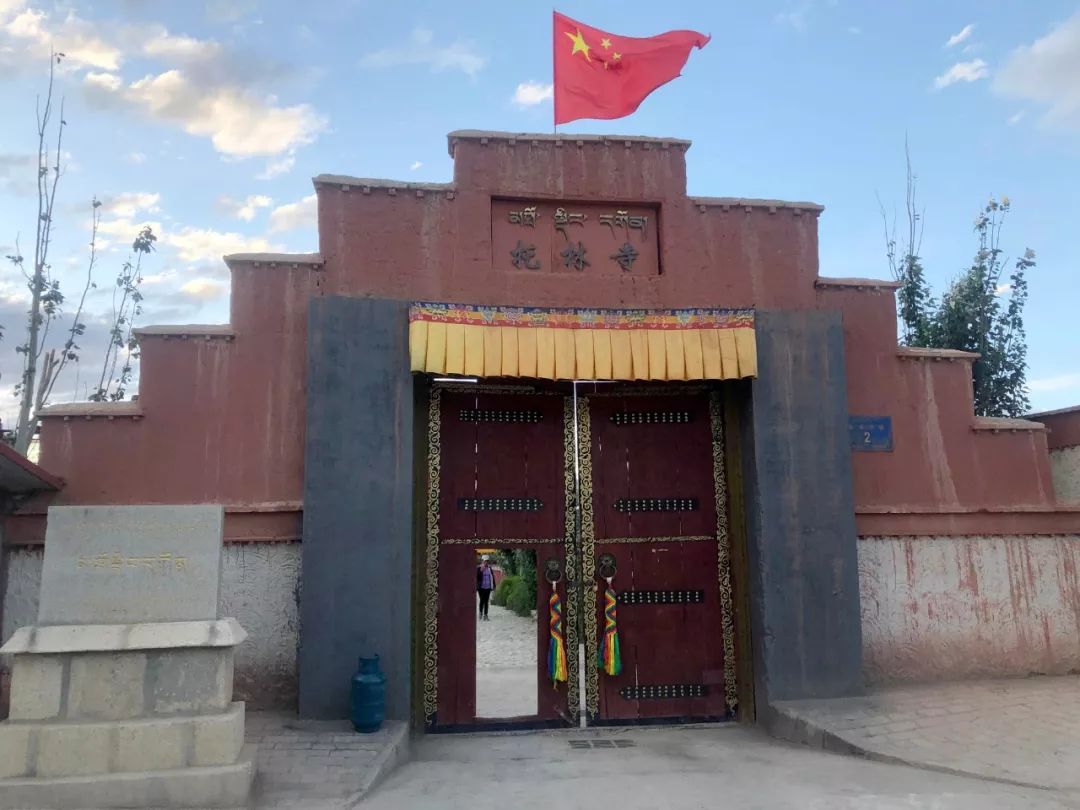
Last time I mentioned: See the Ali-China Boundary Lake and the Zanda soil and forest landforms ...
In the morning, we arrived at Tuolin Temple in Zanda County. It was founded more than a thousand years ago by La Lama Yesiwo, the eldest son of the first king of the Guge Kingdom, Dezugun. It is only more than 20 kilometers away from the ruins of the Guge Kingdom. Tolin means "flying in the air".
Due to the vigorous efforts of the Guge Dynasty to promote Buddhism, Tuolin Temple gradually became the center of Buddhism at that time. The temples and pagodas in Tuolin Temple, as well as the stunning murals and sculptures in the temple, are all cultural heritage left by the Guge Dynasty and record the unique Ali culture.
Tuolin Temple, ticket price 50 yuan/person


As soon as I entered the door, I saw devout Tibetans spinning prayer wheels around the Buddhist temple.


The architectural layout of Tuolin Temple is in the shape of a belt, including three parts: the hall, the monk's residence and the pagoda.
The main buildings include the Ghasa Hall, the White Hall (Nun Hall), the pagoda, the Arhat Hall, the Maitreya Buddha Hall, the Dharma Protector Hall, the Assembly Hall (Zulakang Hall), the Sekang Hall, the Atisha Sutra Hall and the prayer room. Rajang, Sangha, etc.
central hall

huge pagoda

Tallinn


monk's house

The ruins of the Great Translator’s original Zen monastery

white palace


Visit the precious Buddha statues and murals in the hall. The murals are mainly preserved in the current Dukang Hall and White Hall, each with a history of five hundred and thousands of years.

red hall

At the entrance of the hall, staff are counting the "tsa tsa", which are clay Buddha statues taken from the pagoda.


Entering the hall, there are more than a dozen small halls connected to the inner courtyard of the main hall, which are all dilapidated. All the precious Buddha statues and murals inside were destroyed during the Cultural Revolution, which is a pity.


Only some "broken arms and limbs" are left

The huge Buddha statue disappeared


There are many small palaces around


The ground in front of the Buddha statue is inlaid with Dzi beads

Stored in the hall is one of the three temple treasures - the thousand-year-old antlers, which are the mounts of Buddha.
Climb up to the rooftop of the Buddhist temple and overlook the entire Tuolin Temple.

The temple is surrounded by earthen forests

Visiting the entire Tuolin Temple is like peeking into some rare treasure. After exploring it for a long time, I couldn’t bear to leave...
Say goodbye to Tuolin Temple and visit the mysterious Guge Dynasty that created it in the afternoon, all the way around the Zanda Earth Forest.



Park in the parking lot of Guge Dynasty Scenic Area, in front of which is the carriage leading to Guge Dynasty

Have lunch at the scenic canteen opened by Tibetans, with a strong Tibetan style

You can order Chinese food and have a bowl of pork ribs noodles

After dinner, take the scenic bus to Guge Dynasty. The entrance fee is 65 yuan/person and the inter-regional bus fare is 20 yuan/person.
Arrive at the Guge Dynasty, a scene of blue sky and loess soil and forest

Next to it are stones with Tibetan writing and inscriptions.

Standing in front of the Guge Dynasty is like a fairy tale kingdom

Compare the last stronghold of mankind in "Lord of the Rings"-the castle of Gondor

In the first half of the 10th century AD, the Guge Kingdom miraculously appeared on the desolate plateau with an average altitude of 4,000 meters. It lasted for more than 700 years, with 28 hereditary kings and a population of 20 at its peak. Thousands of people. However, the mysterious Guge Dynasty suddenly disappeared from history more than 300 years ago, leaving only this castle that makes people imagine...
Why did the mysterious Guge Dynasty disappear from history overnight? For its discussion, please see the picture below↓



Enter the Guge Dynasty



The entire castle of the Guge Dynasty is 300 meters high and the terrain is steep. The caves, pagodas, watchtowers, temples and palaces are arranged in an orderly manner. From bottom to top, it is magnificent.
Visit the first Buddhist temple, which is also the only one open to the public. It contains precious Buddhist murals with a history of thousands of years.

(Because photography is prohibited inside the temple, the following mural pictures are from the Internet)


Continuing to travel through the Guge Dynasty, there are buildings and caves that look like mud everywhere. Most of these caves are residential rooms and are densely packed all over the hillside.

Accommodation in Guge has a strict hierarchical system: On the hillside are accommodations for nobles and nobles, at the bottom of the hill are slaves, and some caves are monks' practice areas.
Entering the cave, there are small caves for stacking tsasi, which look like lockers.


This caveSince the upper walls are blackened, I guess it is probably a kitchen.

The several temples in the middle of the mountainside are Dumu Hall, Red Hall, White Hall and Samsara Hall. There are clay Buddha statues and colorful murals remaining in the temple.

white palace


Tallinn

Continue uphill to view the cave

earth forest

earthen architecture



With such a steep mountain wall as a barrier, climbing to the top of the mountain is more difficult than climbing to the sky. So how did the Guge people themselves go up the mountain? It turns out that the clever Guge people built many secret passages in the mountain. Certain windows-like holes in the secret passages were used for both lighting and defense. These secret passages are winding and winding, and you can go up the steps to reach the palace on the top of the mountain.
Finally passed through a deep cave

Reaching the pinnacle of the Guge Dynasty

The palace buildings are concentrated on the top of the mountain. On the one hand, they are for defense. On the other hand, they also symbolize the king's supreme power. There are more than 40 houses. Although the area is not large, they are small and unique.


The Buddhist temple built at the highest point

In the west of the palace, there are architectural ruins with an area of about 200 square meters. It is the largest building among the royal buildings. It is estimated that this is the hall used by the kingdom to discuss affairs.

There is a small cave in a hidden high place, which is said to lead directly to the bottom of the mountain.

After climbing the castle-like dreamy Guge Dynasty, I feel like I have dreamed back for thousands of years. I can't help but sigh at the wisdom of the ancients and the changes in history...
